Related Research Articles

Monmouthshire is a county in the south east of Wales. It borders Powys to the north; the English counties of Herefordshire and Gloucestershire to the north and east; the Severn Estuary to the south, and Torfaen, Newport and Blaenau Gwent to the west. The largest town is Abergavenny, and the administrative centre is Usk.
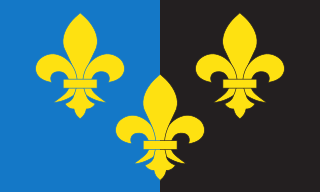
Until 1974, Monmouthshire, also formerly known as the County of Monmouth, was an administrative county in the south-east of Wales, on the border with England, and later classed as one of the thirteen historic counties of Wales. Its area now corresponds approximately to the present principal areas of Monmouthshire, Blaenau Gwent, Newport and Torfaen, and those parts of Caerphilly and Cardiff east of the Rhymney River.
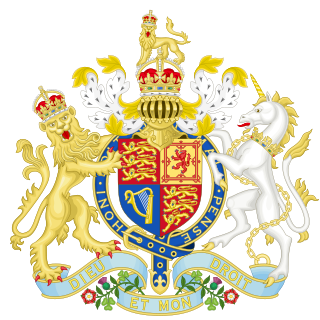
The Welsh Church Act 1914 is an Act of Parliament under which the Church of England was separated and disestablished in Wales and Monmouthshire, leading to the creation of the Church in Wales. The Act had long been demanded by the Nonconformist community in Wales, which composed the majority of the population and which resented paying taxes to the Church of England. It was sponsored by the Liberal Party and opposed by the Conservative Party.
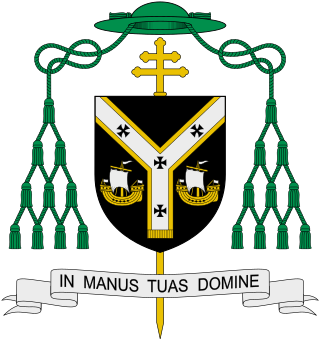
The Archdiocese of Cardiff is a Latin archdiocese of the Catholic Church which covers the south-east portion of Wales and the county of Herefordshire in England. The Metropolitan Province of Cardiff therefore covers all of Wales and part of England. Cardiff's suffragan dioceses are the Diocese of Menevia and the Diocese of Wrexham.

The Bishop of Llandaff is the ordinary of the Church in Wales Diocese of Llandaff.
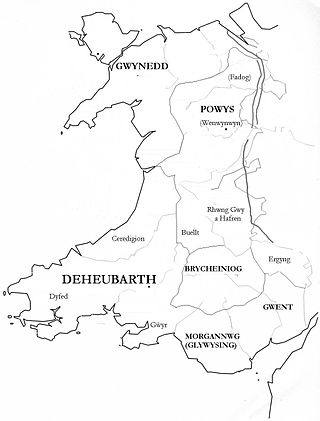
Gwent was a medieval Welsh kingdom, lying between the Rivers Wye and Usk. It existed from the end of Roman rule in Britain in about the 5th century until the Norman invasion of Wales in the 11th century. Along with its neighbour Glywyssing, it seems to have had a great deal of cultural continuity with the earlier Silures, keeping their own courts and diocese separate from the rest of Wales until their conquest by Gruffydd ap Llywelyn. Although it recovered its independence after his death in 1063, Gwent was the first of the Welsh kingdoms to be overrun following the Norman conquest.

Llantarnam Abbey is a Grade II*-listed abbey of the Sisters of St Joseph of Annecy and a former Cistercian monastery located in Llantarnam, Cwmbran in the county borough of Torfaen in southeast Wales.
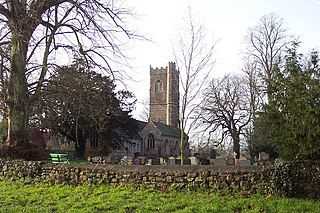
Mathern is a historic community (parish) and village in Monmouthshire, south east Wales, about 3 miles (4.8 km) south west of the town of Chepstow, close to the Severn estuary, the Bristol Channel and the M48 motorway. The village is designated as a Conservation Area. It is now bisected by the motorway, which passes over the road through the village, with the original village located to the south and the more recent development, known as Newton Green, to the north.
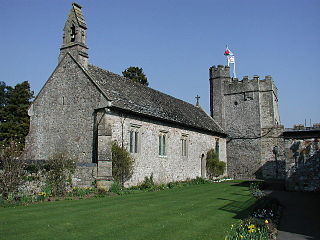
St Pierre is a former parish and hamlet in Monmouthshire, south east Wales, 3 miles (4.8 km) south west of Chepstow and adjacent to the Severn Estuary. It is now the site of a large golf and country club, the Marriott St Pierre Hotel & Country Club, which was previously a large manor house and deer park belonging to the Lewis family.
Pwllmeyric is a small village in Monmouthshire, Wales, located 1 mile south west of Chepstow, on the A48 road within the parish of Mathern. The name Pwllmeyric means, in Welsh, "Meurig's pool" and refers to the pwll or creek of the Severn estuary which, before it silted up, linked the village to the sea. It was named for Meurig ap Tewdrig, king of the early Welsh kingdoms of Gwent and Glywysing in the 5th or 6th century, who buried his father Tewdrig at Mathern.

Mathern Palace is a Grade I listed building in the village of Mathern, Monmouthshire, Wales, located some 3 miles (4.8 km) south-west of Chepstow close to the Severn Estuary. Between about 1408 and 1705 it was the main residence of the Bishops of Llandaff. After falling into ruin, it was restored and its gardens laid out between 1894 and 1899 by the architectural writer Henry Avray Tipping. The garden surrounding the palace is listed on the Cadw/ICOMOS Register of Parks and Gardens of Special Historic Interest in Wales.
Eric Carwardine Francis was a British architect and painter who designed a number of notable buildings, particularly in Monmouthshire, Gloucestershire and Somerset, in the early and mid-twentieth century, many in the Arts and Crafts style.
A bibliography of books related to the Vale of Glamorgan, south Wales.

Monmouthshire is a county and principal area of Wales. It borders Torfaen and Newport to the west; Herefordshire and Gloucestershire to the east; and Powys to the north. The largest town is Abergavenny, with the other major towns being Chepstow, Monmouth, and Usk. The county is 850 km2 in extent, with a population of 95,200 as of 2020. The present county was formed under the Local Government (Wales) Act 1994, which came into effect in 1996, and comprises some sixty percent of the historic county. Between 1974 and 1996, the county was known by the ancient title of Gwent, recalling the medieval Welsh kingdom. In his essay on local government in the fifth and final volume of the Gwent County History, Robert McCloy suggests that the governance of "no county in the United Kingdom in the twentieth century was so transformed as that of Monmouthshire".

Wyelands, sometimes styled The Wyelands or Wyelands House, is a Grade II* listed building and estate located about 1 mile (1.6 km) north of the village of Mathern, Monmouthshire, Wales, United Kingdom and about 1 mile (1.6 km) west of the edge of Chepstow. It is a neoclassical villa designed by Robert Lugar in the late Regency period, and was completed around 1830. The park surrounding the house is listed on the Cadw/ICOMOS Register of Parks and Gardens of Special Historic Interest in Wales.

St John's Church was the parish church for Abergavenny, Monmouthshire until the Dissolution of the Monasteries when the priory church of St Mary's Priory became the parish church. The church then became a grammar school and is now part of a masonic lodge. The only parts of the church that still remain are the tower and part of the nave.
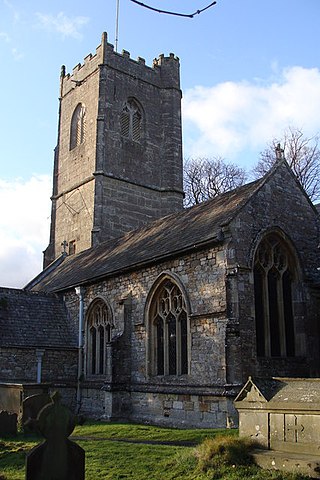
St Tewdric's Church is a Church in Wales parish church in Mathern, Monmouthshire, Wales. It is purportedly built over the resting place of Saint Tewdrig for whom it is named. A church has been located on the site since the 6th century. It was reconstructed by the Normans in the Early English style, and later was renovated by the Victorians. It is a Grade I listed building.
The 1859 Welsh revival was a Christian revival which occurred in South Wales and was documented by three Welsh religious historians:

A History of Monmouthshire from the Coming of the Normans into Wales down to the Present Time is a study of the county of Monmouthshire written by Sir Joseph Bradney and published by Mitchell, Hughes and Clarke of London between 1904 and 1932. The history comprised twelve volumes, based on six of the seven historic hundreds of Monmouthshire; Skenfrith, Abergavenny, Raglan, Trellech, Usk and Caldicot.
The Welsh Church Commissioners were set up by the Welsh Church Act 1914 to deal with the disendowment of the Church of England in Wales, as part of its disestablishment. Their task was to ascertain which ecclesiastical assets the future Church in Wales should retain, and which should be transferred to local authorities, and to various Welsh national institutions. They were required to transfer those assets which the Church in Wales was entitled to retain to the Representative Body of the Church in Wales. The remaining assets were to be transferred to the thirteen county councils and four county borough councils which existed in Wales until 1974, and to the University of Wales and its constituent colleges. For various reasons which are explained below, the process took considerably longer than was first envisaged. The commissioners could not ultimately be wound up until 1947. The assets transferred constituted the "Welsh Church Act Funds" of the respective institutions. The county and county borough councils hold the funds for charitable and other purposes. The funds are still in existence.
References
- ↑ Mein, A.G. (1992). "Obituary Cannon E.T. Davies". Gwent Local History Journal of the Gwent Local History Council. 73 (Autumn): 2-3. Retrieved 21 March 2024.
- ↑ Williams, Glanmor (1993). "Canon Ebenezer Thomas Davies (1903-1991)". Journal of Welsh Religious History. 1: 112-115.
- ↑ See Mein (1992). The reference to 'Pontycwmwr Grammar School' might imply 'Garw Secondary Modern School', which was subsequently renamed as 'Garw Grammar School' and 'Ysgol Cwm Garw', see Always a Garw Boy.
- ↑ See Mein (1992).
- ↑ See Williams (1993) previously.